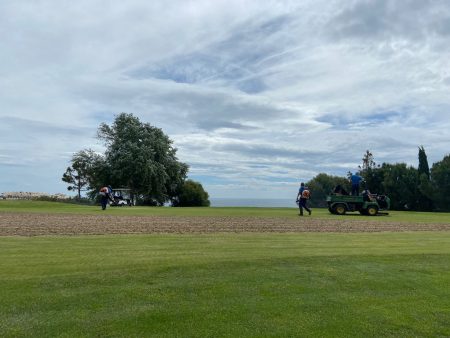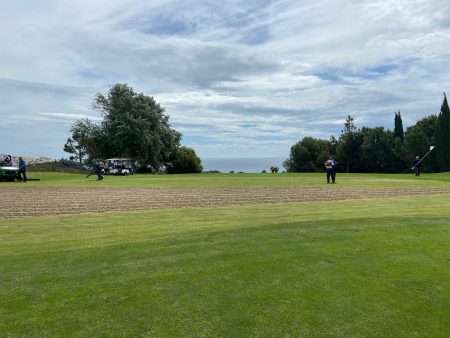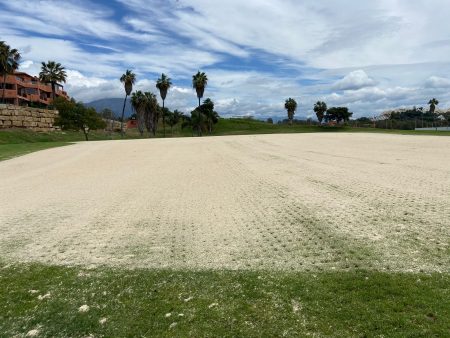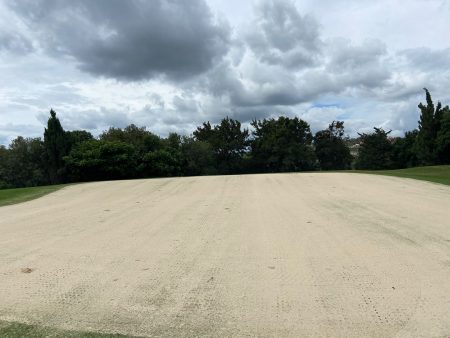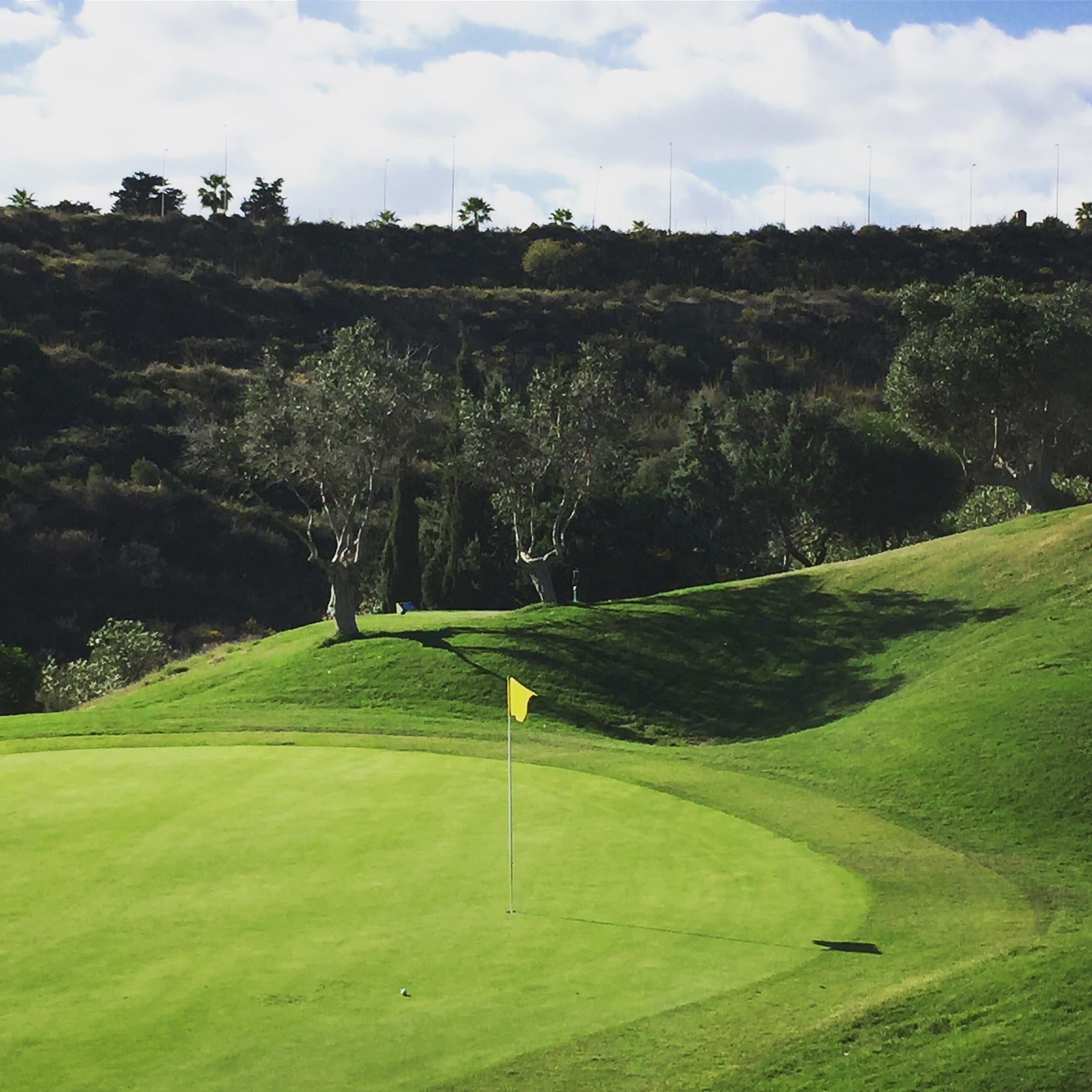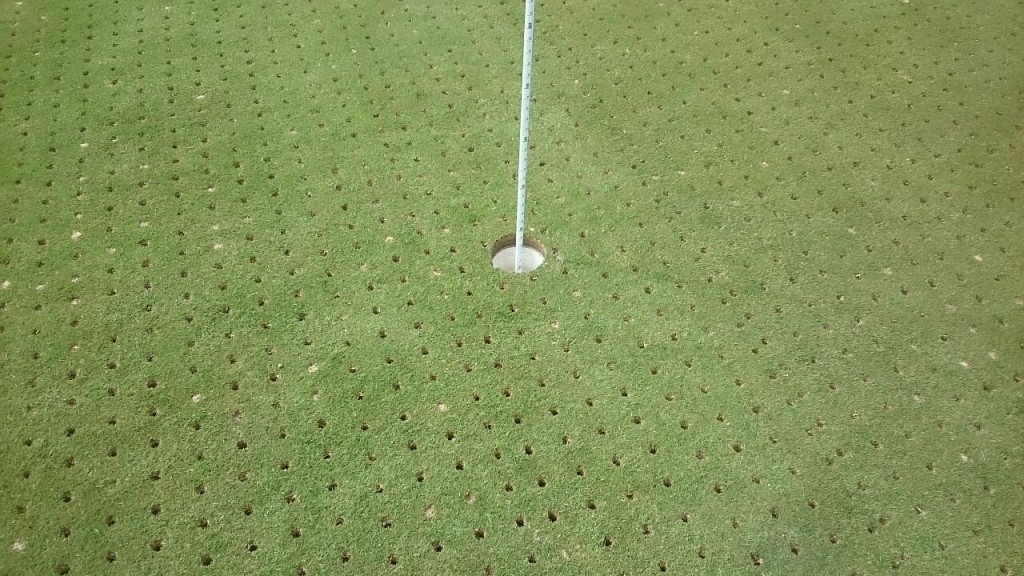Greens spiking. Why is it so important?
This week we are doing the spring maintenance works, this is what we know as ” spiking the greens”. And it is so called because the greens are literally spiked.
Do you know how it is done and why? We will tell you the details of this curious work:
Why do we need to do it? What happens if we don’t spike the greens?
The course, as a living entity, needs care: there must be a balance between soil, water and air. When this is missing, the green becomes compacted, which is the lack of space for water and oxygen to penetrate to the roots, which end up dying.
Compaction is caused by daily wear and tear: footsteps, passing machinery and even ball strikes.
A compacted green looks not very soft and especially rough, and this is also affecting the game.
What does this involve?
This task is carried out in several phases:
- Fertilising: fertiliser is used to strengthen the plant so that it can resist the spiking process.
- Spiking: a special machine is used to spike with hollow tubes and extract cylinders of soil and grass about 2 centimetres in diameter and 5 or 6 centimetres long.
- Sweeping: after pricking, the surface is cleaned and a layer of sand is applied to help air and water pass through.
A 18-hole course usually takes about a week to be spiked.
What happens after spiking?
It will take 7 to 14 days for the course to recover and be in perfect playing condition.
After reopening, players will notice hole marks and some sand. The greens are less firm, which affects the trajectory of the ball and may penalise us with an extra putt.
When is it done?
Normally, it is done twice a year, between the sudden changes in temperature in winter and summer.
Some courses are now opting to carry out between 4 and 6 microspikings a year, a similar technique but less invasive because the holes are very slim, no sand is used and it hardly affects the development of the game.
Spiking and players, how is it managed?
Before spiking
Although the dates do not usually vary too much from one year to another, it is planned many months in advance, seeking a balance between weather requirements and demand, in order to try to prejudice the least possible number of players.
At Doña Julia we always inform members and customers so that they can plan their games and to ensure that their playing expectations are not affected.
During the spike
Some courses close the entire course (especially those with more than 18 holes) and others choose to close 9 holes and allow play on the other 9 and then reverse.
At Doña Julia we close only 9 so that players can continue to enjoy the course.
After the spike
It is a good idea to inform players of the course conditions. It is also important not to confirm events or tournaments after a spike, but to leave time enough for the course to recover and to have guarantees that the course will be in the best conditions.
At Doña Julia we offer special prices for those players who decide to come during and after the spiking.
In summary, this is just a preventive maintenance, necessary for our greens to be healthy and, furthermore, for the game not to be affected.
Here we can see the maintenance team of Doña Julia during the first days of spiking.
- Spiking 2021 I Pinchado 2021
- Spiking 2021 I Pinchado 2021
- Spiking 2021 – Sweeping I Pinchado 2021 – Barrido I
- Spiking 2021 – Sweeping I Pinchado 2021 – Barrido I
